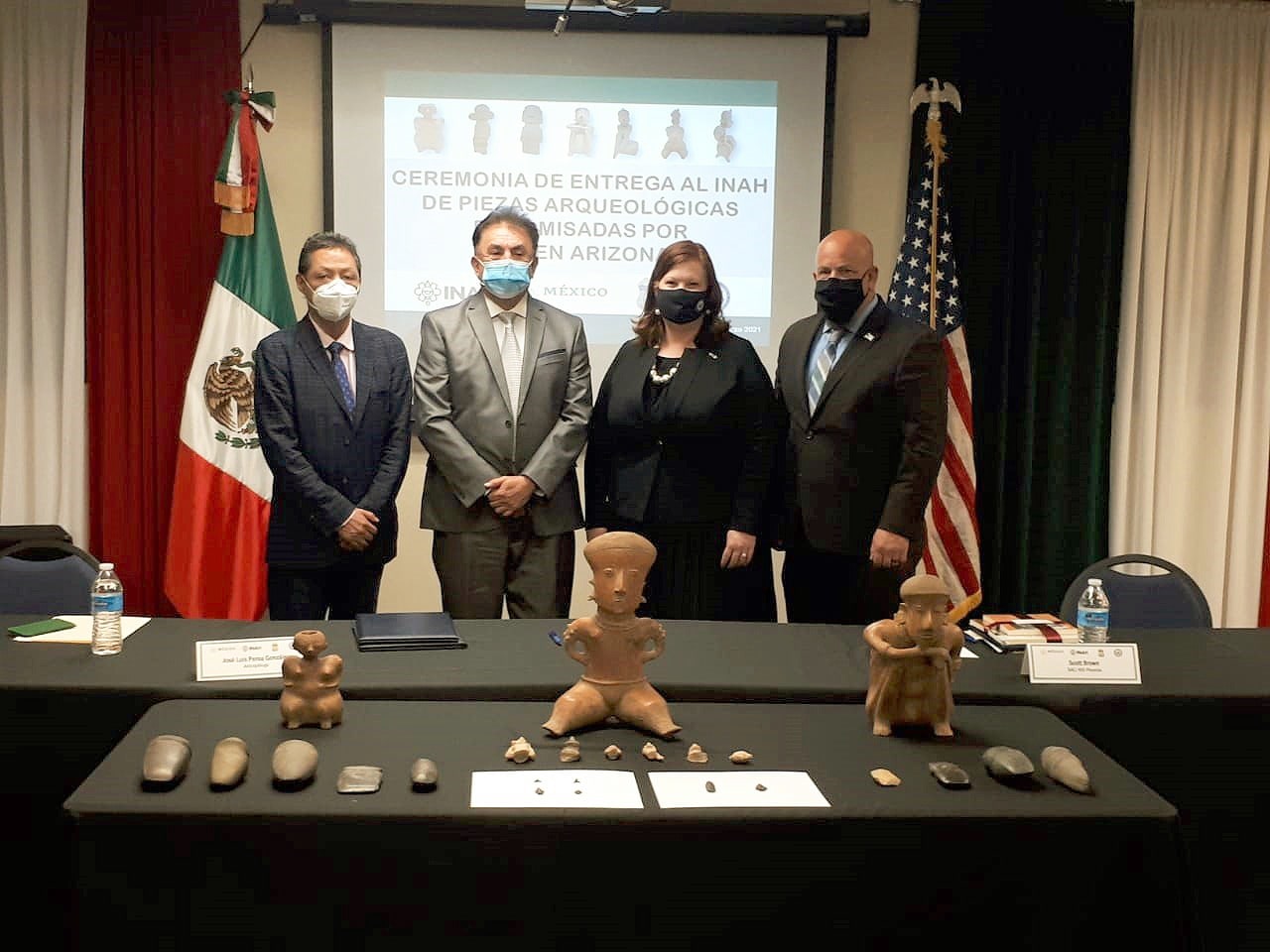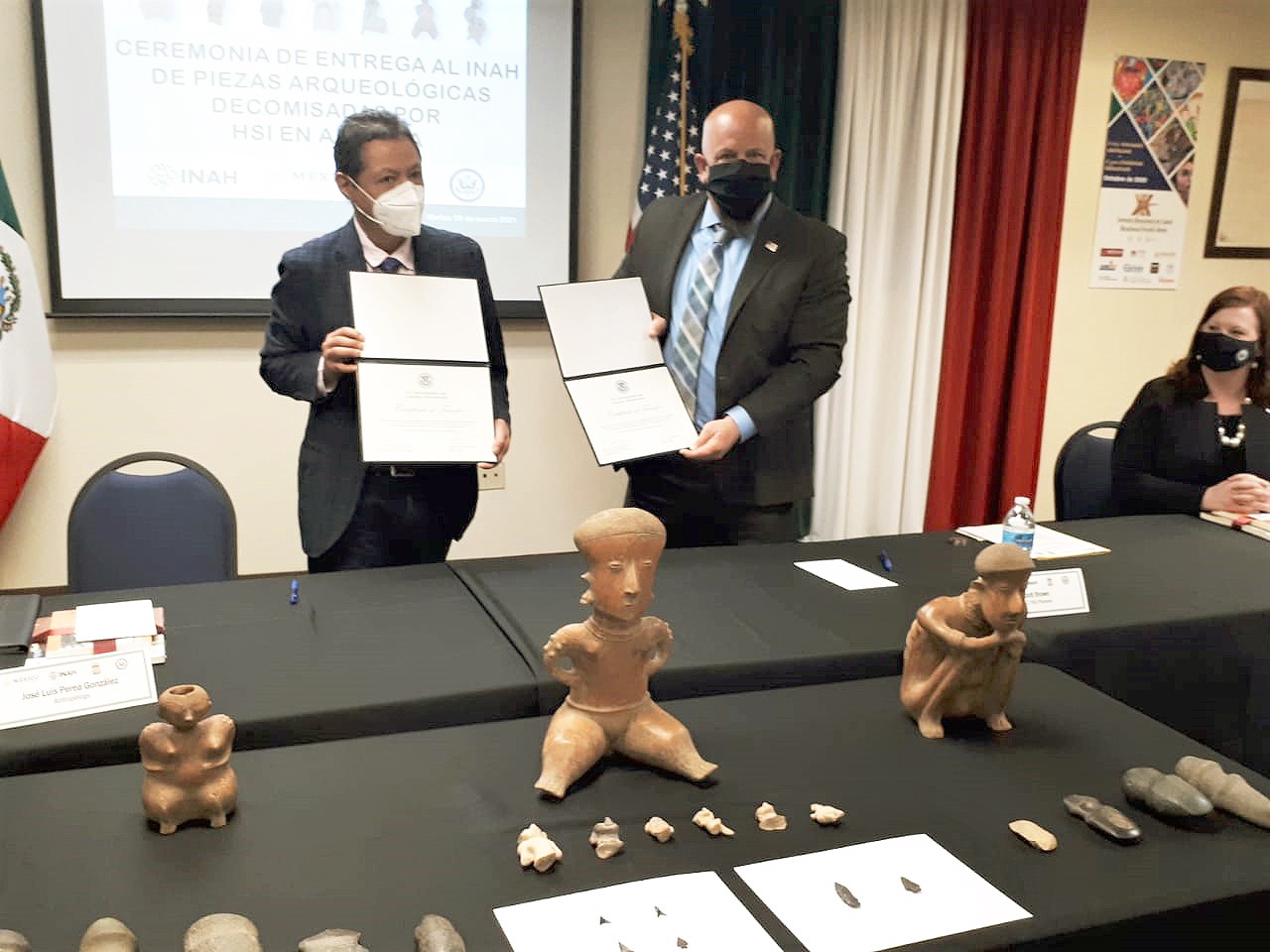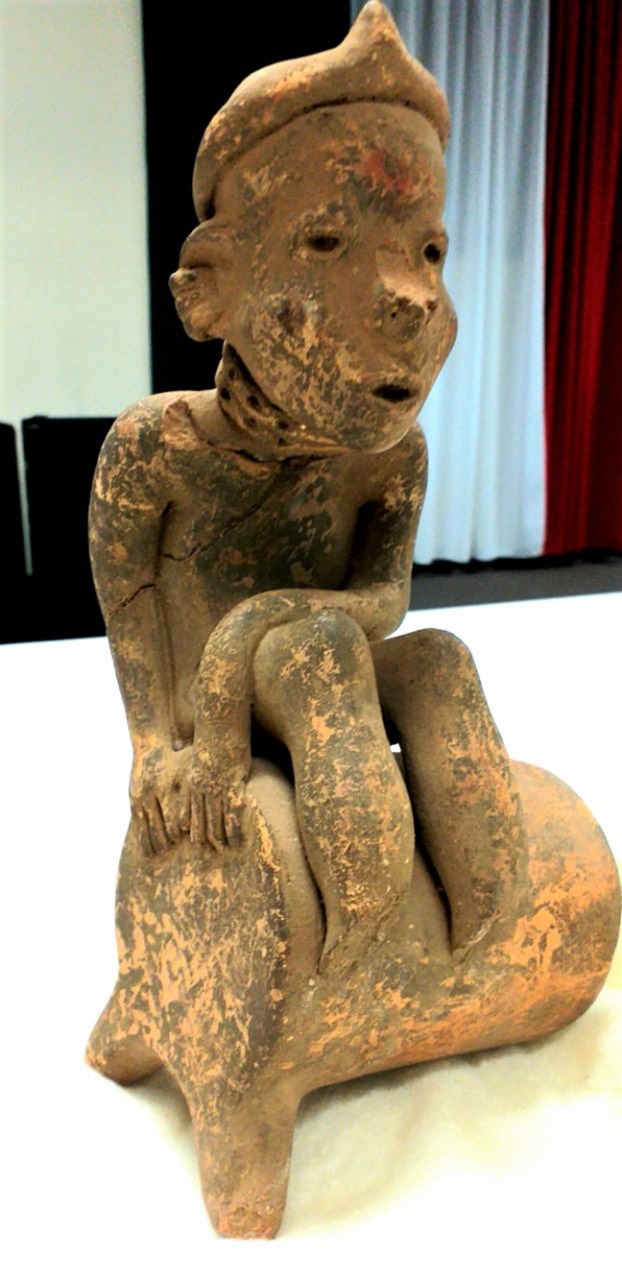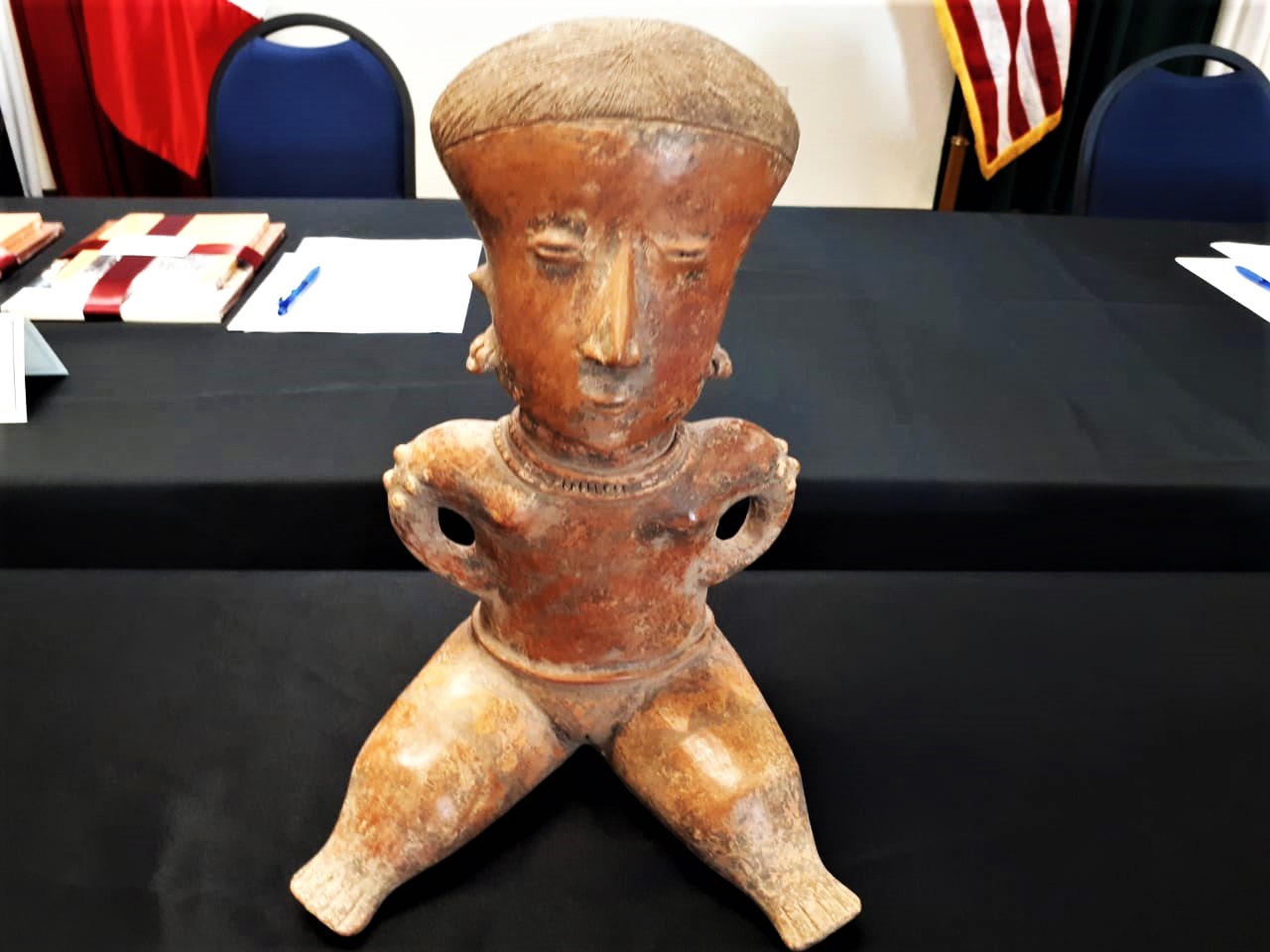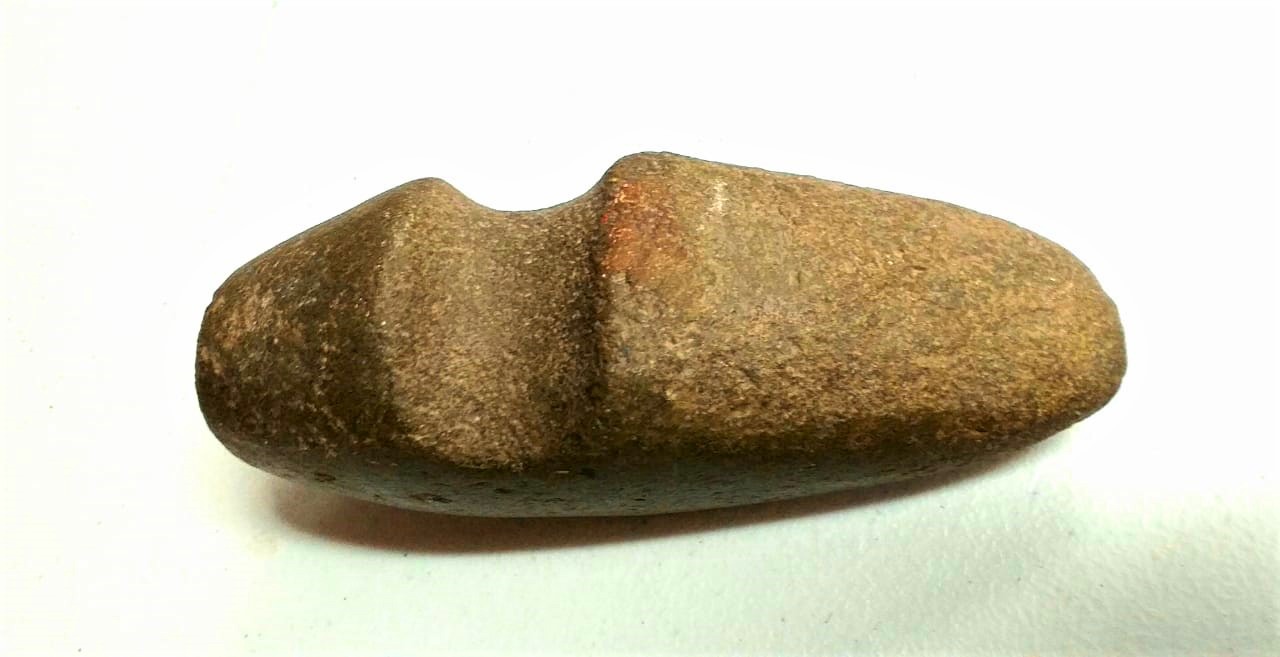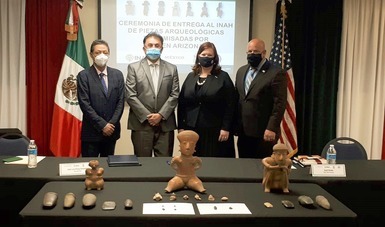- The artifacts were returned to the INAH to be catalogued, studied, safeguarded and publicized.
A ceremony was held on March 9 at the Consulate General of Mexico in Nogales, Arizona to mark the repatriation of 280 archaeological artifacts to Mexico. This was the result of joint action taken by the Ministry of Foreign Affairs and the National Institute of Anthropology and History (INAH), which is part of the Culture Ministry.
Delivery of Mexico's cultural heritage took place under strict health protocols. The event was attended by Mexico's Consul General in Nogales, Arizona, Ambassador Ricardo Santana Velázquez; US Immigration and Customs Enforcement's (ICE) Homeland Security Investigations (HSI) Special Agent in Charge , Scott Brown; the U.S. Consul General in Nogales, Sonora, Laura Biedebach, and the anthropologist José Luis Perea González, director of the INAH Center in Sonora.
Two lots of pieces were returned: the first was seized by ICE/ HSI in 2012, which later coordinated the review and identification of the artifacts with INAH.
The first lot is made up of 270 pre-Hispanic archaeological pieces, most of which are carved of stone, mainly bifacial projectile points, as well as polished stone tools, specifically, stone axes with a polished channel for a stick or handle. It includes a remarkable group of rare copper bells. These archaeological artifacts were stolen from various archaeological sites in the state of Sonora.
The second lot is made up of ten pieces delivered by the Chandler Museum to ICE/HSI to be returned to Mexico. The most notable pieces in the lot are anthropomorphic ceramic figurines from the shaft tomb tradition of western Mexico. Some exceed 30 cm in height and are remarkably detailed, showing the ornamentation and adornment of the ancient settlers of pre-Hispanic Mexico.
Archaeologists Elisa Villalpando Canchola and Jupiter Martínez Ramírez of the INAH Sonora Center were in charge of the authentications and evaluations of the pieces.
The U.S. Consul General in Nogales, Sonora, Laura Biedebach, said, “50 years ago, our countries signed a collaboration treaty to recover stolen archaeological and cultural antiquities. This agreement has led us to work together closely to return property that has been taken illegally out of the country to which it belongs. Today that work has paid off and we can celebrate these actions. The Government of the United States will continue to collaborate with all agencies and across borders, in keeping with its commitment to stop the theft and trafficking of cultural heritage.”
In Mexico City, Culture Secretary Alejandra Frausto Guerrero applauded the repatriation of the pieces, which she said, "is an example of the daily and coordinated work carried out by the institutions of the Mexican government and of the shared commitment with the United States government to recover, protect and respect the cultural, historical and archaeological heritage of our peoples. The Culture Ministry is constantly working to repatriate Mexico's cultural heritage. It has already established new channels of cooperation to repatriate these treasures."
Anthropologist José Luis Perea González said that “once in Mexico and under the custody of INAH, the archaeological artifacts will be studied and catalogued prior to being recorded in the Public Registry of Archaeological and Historical Monuments and Zones. As much information as possible will be gleaned from the pieces. Although unfortunately they were not found in situ, they will allow us to learn more about the societies that made them and to make the information available to the public. Eventually, all the pieces will become part of the INAH's permanent collection of archaeological artifacts.
“This repatriation comes at an opportune moment, as this year we are commemorating the 500th anniversary of the taking of Tenochtitlan, which was a foundational and heartbreaking encounter between the cultural universes of Western Europe and America. Mexico's pre-Hispanic cultures deserve our sincere recognition, as does their resistance and the presence of the contemporary indigenous peoples,” added Perea González.
The Consul General of Mexico in Nogales, Arizona, Ambassador Ricardo Santana Velázquez, said: “Mexico and the United States are allies regarding the culture of legality, so today we renew our ties as good neighbors under a treaty signed in 1970 for the recovery and return of historical and cultural property. The people of Mexico are grateful for the willingness of both countries to combat the illicit trafficking that occurs at our borders and for the investigation, authentication and administrative steps needed to do this.”
The binational collaboration is based on Section 310, subsection B of the U.S. Convention on Cultural Property Implementation Act and on Mexico's Federal Law On Archaeological, Artistic and Historic Monuments and Areas.
The 2019-2024 National Development Plan of the current Mexican administration highlights the protection and conservation of the country's diversity, memory and cultural heritage, from which arise its efforts to recover various types of cultural heritage, and to preserve, investigate, protect and promote them.
The restitution of these pre-Hispanic pieces of the Sonoran cultures is an example of the active cooperation between the United States and Mexico to protect cultural property that concerns both countries and a commitment to returning historical and cultural patrimony to their countries of origin.
* Photographs courtesy of INAH
